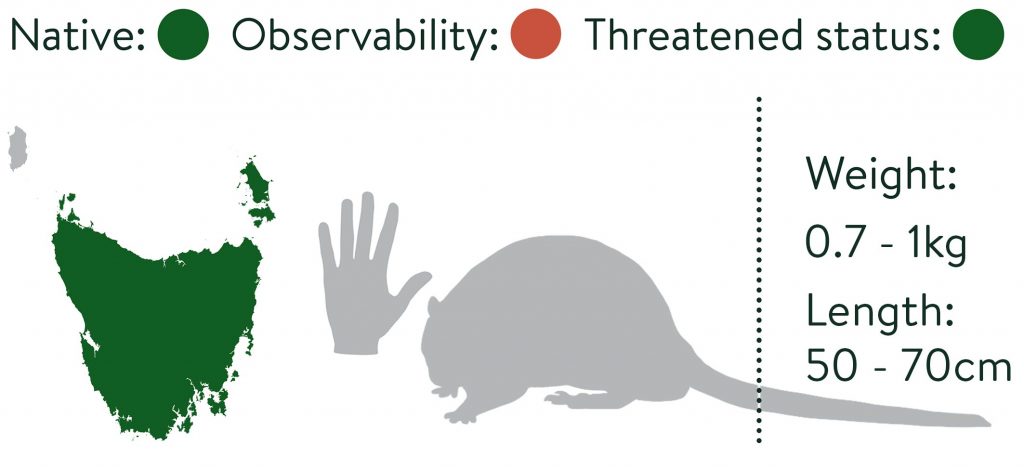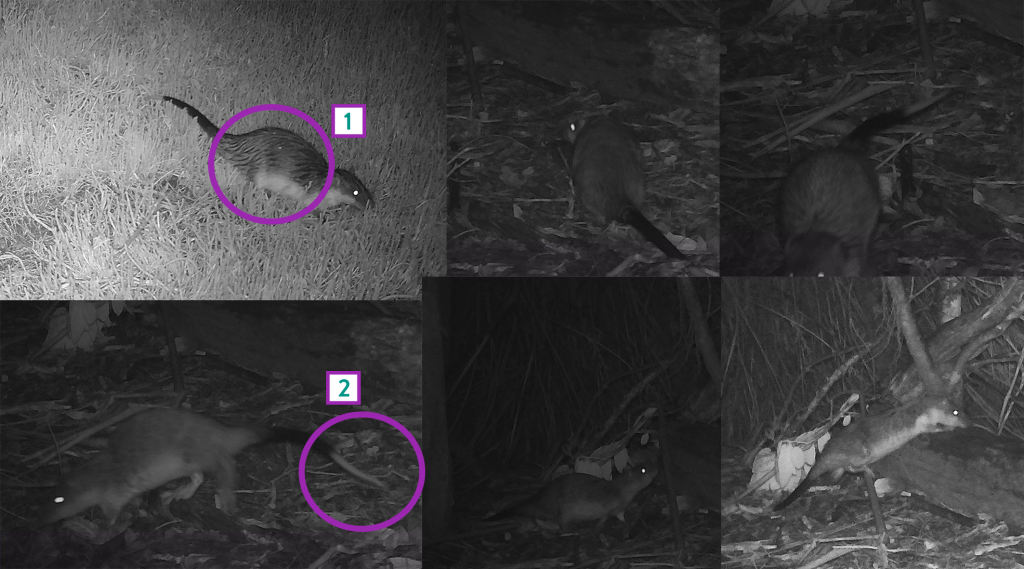Muridae | Hydromys chrysogaster
Frequently referred to as rakali, the name used by the Ngarrindjeri people of the lower Murray River and Coorong, this golden-bellied water rat is native to a diverse range of habitats throughout Australia and New Guinea.

Lifestyle
Rakali forage throughout the day but are most active in the first few hours after dusk. When they are not hunting, rakali take shelter in burrows along the water’s edge, whether that be a marine beach, lake or creek line. They might also use hollow logs. Females typically give birth to around three or four young and can do so at any time of year. If food is good, they may produce multiple litters. Young gain independence from their mum after about two months, half of which is spent suckling. Rakali have webbed feet, water-repelling fur, and highly specialised teeth that make them formidable amphibious predators. What’s more, rakali are known to adopt a ‘sit and wait’ predatory strategy, whereby they dip their long and super sensitive whiskers into the water before ambushing prey when vibrations are sensed. Adult rakali may defend home ranges of between one and four kilometres in length along a river but we still know very little about their spatial use. Population densities of rakali appear to vary greatly according to resource availability.

Key identifying features
Semi-aquatic – fur often looks wet (1). Sleek body with broad, webbed hindfeet. Large, flat head with small ears. Long thick tail, usually dark with a white tip (2). Black to brown coat with white or golden underbelly.
Similar species
Ringtail Possum – similar body size but more stocky; arboreal (usually in trees) with no association with water; face is less elongated but pointed.
Habitats
Creeks, rivers and lakes. Saltmarsh, beaches and coastal estuaries.
Diet
Generalist carnivore. Aquatic bugs, snails and shellfish. Crabs, frogs, fish and even waterfowl.
Threats
Historical hunting and persecution. Salinisation of waterways. Prolonged drought. Predation by feral cats. Illegal fishing traps.
